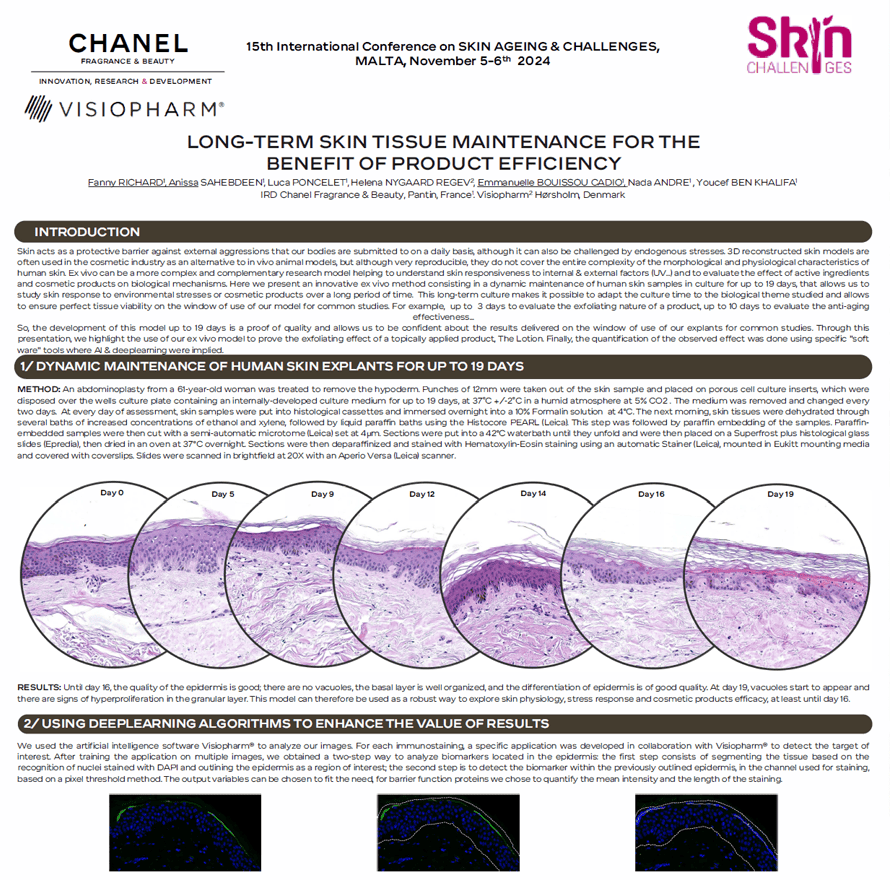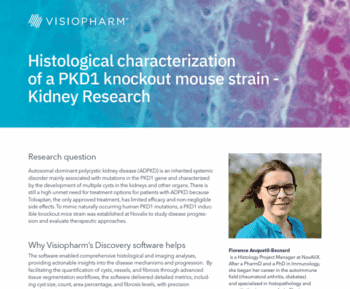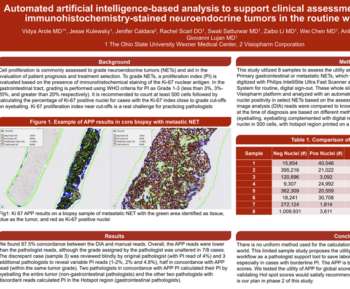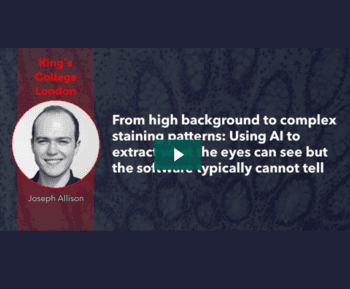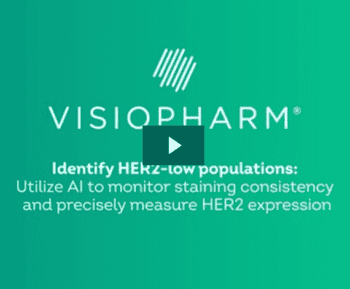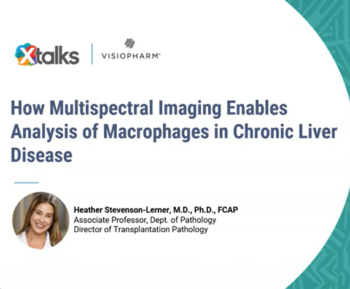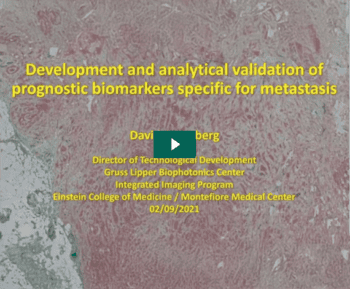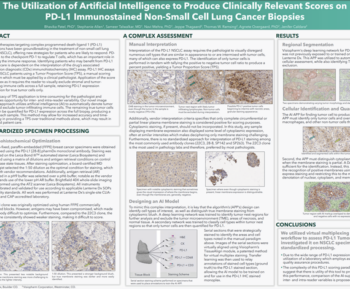Skin acts as a protective barrier against external aggressions that our bodies are submitted to on a daily basis, although it can also be challenged by endogenous stresses. 3D reconstructed skin models are often used in the cosmetic industry as an alternative to in vivo animal models, but although very reproducible, they do not cover the entire complexity of the morphological and physiological characteristics of human skin. Ex vivo can be a more complex and complementary research model helping to understand skin responsiveness to internal & external factors (UV .. .) and to evaluate the effect of active ingredients and cosmetic products on biological mechanisms. Here we present an innovative ex vivo method consisting in a dynamic maintenance of human skin samples in culture for up to 19 days, that allows us to study skin response to environmental stresses or cosmetic products over a long period of time. This long-term culture makes it possible to adapt the culture time to the biological theme studied and allows to ensure perfect tissue viability on the window of use of our model for common studies. For example, up to 3 days to evaluate the exfoliating nature of a product, up to 10 days to evaluate the anti-aging effectiveness …
So, the development of this model up to 19 days is a proof of quality and allows us to be confident about the results delivered on the window of use of our explants for common studies. Through this presentation, we highlight the use of our ex vivo model to prove the exfoliating effect of a topically applied product, The Lotion. Finally, the quantification of the observed effect was done using specific “soft ware” tools where Al & deeplearning were implied.
Fanny Richard1, Anissa Sahebdeen1, Luca Poncelet1, Helena Nygaard Regev2, Emmanuelle Bouissou Cadio1, Nada Andre1, Youcef Ben Khalifa1
- IRD Chanel Fragrance & Beauty, Pantin, France
- Visiopharm Hørsholm, Denmark

